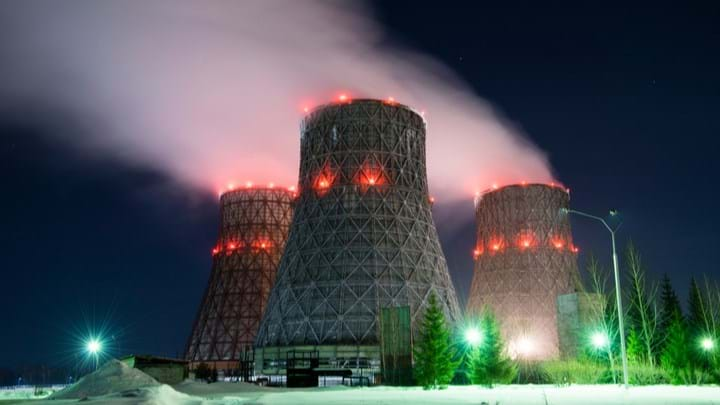Nuclear cogeneration pushed as solution for low carbon heat
Promise lies in small modular reactors, says Royal Society

COGENERATION of heat by new nuclear plants could help balance intermittent renewables and provide a low-carbon source of process heat for hydrogen production and domestic heating, says a report from The Royal Society.
The nuclear industry currently produces huge volumes of unused heat. If this were tapped instead of wasted, process heat could be fed to industry to produce hydrogen, synthetic fuels and for desalination. Nuclear Cogeneration: civil nuclear in a low-carbon future explains that currently, around 65% of the energy generated by nuclear plants is lost as waste heat.
Nuclear cogeneration has found limited application around the world, including low temperature process heat supplied to district heating schemes in China and Sweden, for desalination in Japan, and high-temperature process heat for salt refining in Germany. The policy briefing, compiled following workshops with representatives from industry, academia and trade groups, concludes that the promise of the nuclear industry in decarbonising other sectors lies with a new generation of small modular reactors (SMRs) rather than retrofitting existing larger plants.
SMRs could be located close to industrial clusters, with their reactors matched to the temperature requirements of the users on site. High temperature heat, around 300°C and upwards, can be accessed from the secondary cooling circuit before steam is sent to the turbine generator. Lower temperature waste heat, around 100–200°C, could be extracted from the turbine exhaust.
In the EU, 26% of industrial heat demand is for heat above 400°C, with the majority generated by burning fossil fuels, according to figures from the International Atomic Energy Authority. In the UK, heat for industrial processes contributes 14% of all CO2 emissions, according to the Department for Business, Energy & Industrial Strategy (BEIS).
The report says SMRs integrated into energy and industry networks could balance intermittent supply from renewables by providing electricity to the grid when wind power falls short of demand, and then switch to heat production when the wind is blowing hard. In turn, high temperature heat from next generation reactors, including high temperature gas cooled reactor (HTGR) designs, could essentially provide energy storage by feeding steam to reforming, Haber-Bosch and Fischer-Tropsch processes to produce hydrogen, ammonia, and synthetic fuels.
This article is adapted from an earlier online version.
Recent Editions
Catch up on the latest news, views and jobs from The Chemical Engineer. Below are the four latest issues. View a wider selection of the archive from within the Magazine section of this site.




